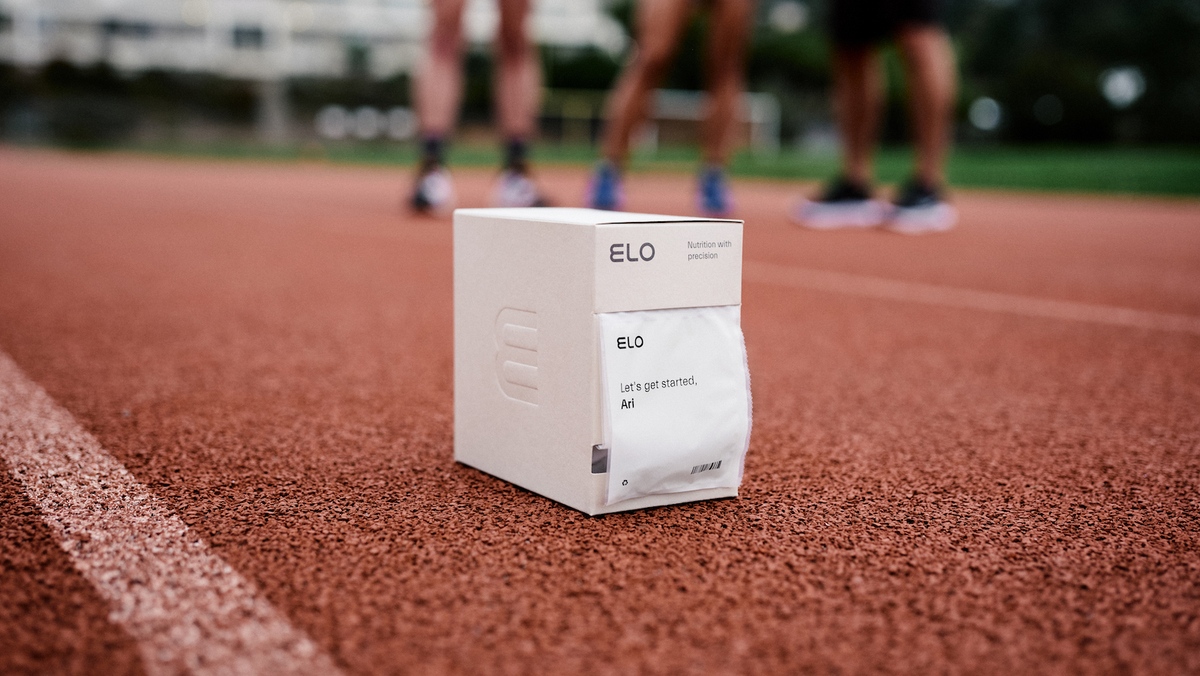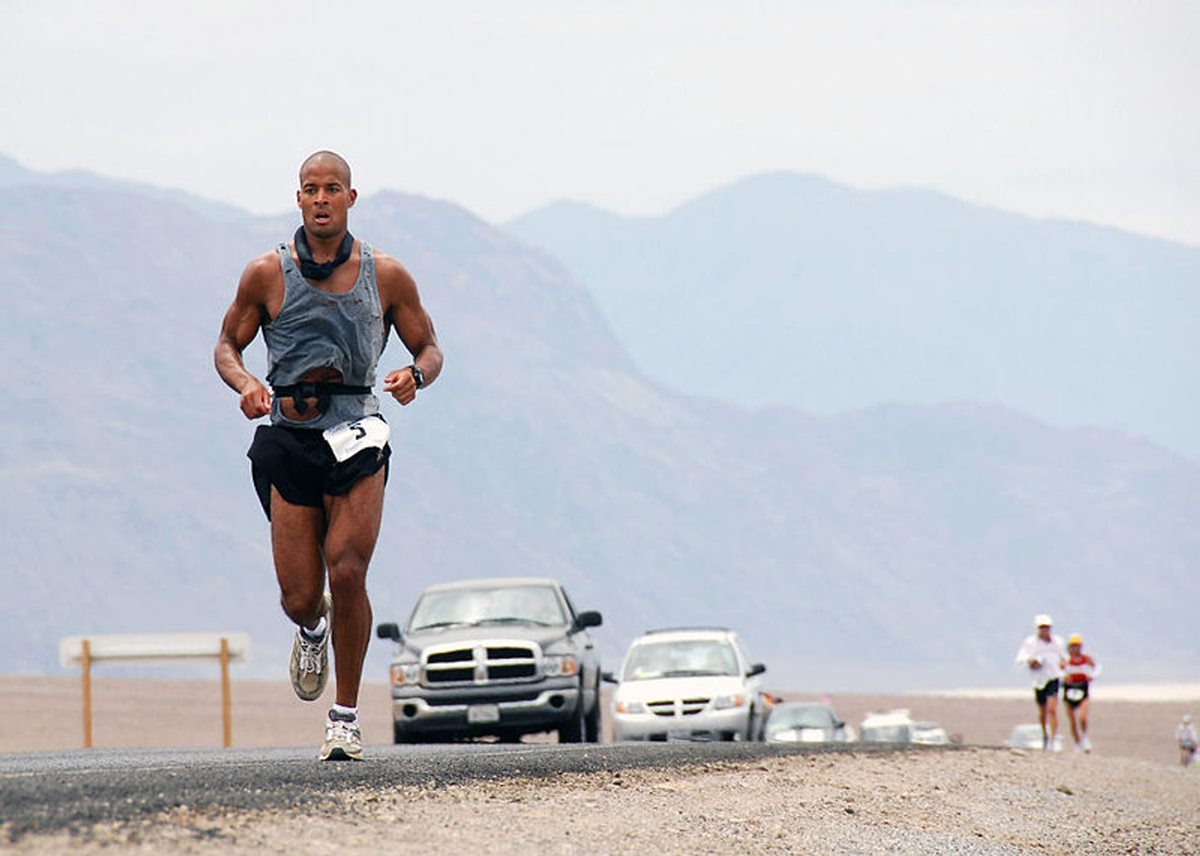Home>Misc>Featured>How To Prevent Dehydration During Long Distance Running


Featured
How To Prevent Dehydration During Long Distance Running
Modified: January 22, 2024
Learn how to prevent dehydration during long distance running with our featured guide. Stay hydrated and perform at your best!
Introduction
Welcome to the world of long distance running! Whether you’re a seasoned marathoner or just getting started with your training, staying hydrated is a crucial aspect of your performance and overall well-being. Dehydration, which occurs when your body loses more fluids than it takes in, can greatly impact your running performance and even lead to serious health complications.
In this article, we will explore the importance of hydration in long distance running and provide you with practical strategies to prevent dehydration during your runs. We will discuss the signs and symptoms of dehydration, the role of hydration in maintaining optimal performance, and the best practices for pre-run, during-run, and post-run hydration. Additionally, we will delve into the topic of electrolyte balance and provide suggestions on the best hydration gear to keep you properly hydrated during your long distance runs.
As a long distance runner, you know that the road ahead is challenging and demanding. Proper hydration will ensure that you have enough energy, endurance, and mental clarity to tackle those miles with confidence. So, lace up your running shoes and let’s dive in to discover how you can prevent dehydration and optimize your performance on the road!
Understanding Dehydration in Long Distance Running
Dehydration is a common and potentially dangerous condition that can occur during long distance running. When you run for an extended period of time, your body loses fluids through sweat and your breathing rate increases, leading to an increased demand for hydration.
During intense physical activity, such as long distance running, your body’s fluid levels can rapidly decrease if not properly replenished. Dehydration occurs when the amount of fluid leaving your body surpasses the amount you consume. This can lead to a variety of negative effects on your performance, including decreased endurance, impaired cognitive function, muscle cramps, and even heat exhaustion or heat stroke.
It is important to understand the signs and symptoms of dehydration so that you can take action and prevent further complications. Common signs of dehydration include increased thirst, dry mouth, dark urine, fatigue, dizziness, and headache. In more severe cases, dehydration can cause confusion, rapid heart rate, low blood pressure, and even loss of consciousness.
When you become dehydrated, your body’s ability to regulate temperature becomes compromised. This is particularly dangerous during long distance running, as it puts you at a higher risk of overheating and developing heat-related illnesses. By understanding the causes and consequences of dehydration, you can take proactive measures to prevent it and ensure a safe and successful running experience.
Signs and Symptoms of Dehydration
Recognizing the signs and symptoms of dehydration is crucial for long distance runners to take immediate action and prevent further complications. Dehydration can have a detrimental impact on your performance and overall well-being. Here are some common signs and symptoms to watch out for:
- Increased Thirst: Feeling excessively thirsty is one of the first signs of dehydration. Your body is signaling that it needs more fluids to compensate for the loss through sweat.
- Dry Mouth and Lips: When you are dehydrated, your saliva production decreases, leading to a dry and sticky sensation in your mouth. Your lips may also feel dry and cracked.
- Dark Urine: Monitoring the color of your urine can give you valuable insights into your hydration status. Dark yellow or amber-colored urine is an indication of dehydration. Ideally, your urine should be pale yellow or clear.
- Fatigue and Weakness: Dehydration can leave you feeling tired and drained of energy. It can significantly impact your muscle endurance and overall performance during long distance running.
- Dizziness and Lightheadedness: Insufficient hydration can lead to low blood pressure, causing feelings of dizziness or lightheadedness. This can affect your balance and coordination, making it unsafe to continue running.
- Headache: Dehydration can trigger headaches due to decreased fluid levels in the body. These headaches are often accompanied by feelings of fatigue and difficulty concentrating.
- Muscle Cramps: Electrolyte imbalances resulting from dehydration can lead to muscle cramps, particularly in the legs and feet. These cramps can be incredibly painful and can hinder your running performance.
If you experience any of these signs or symptoms during your long distance runs, it is important to take immediate action and rehydrate. Ignoring the early signs of dehydration can lead to more serious complications, such as heat exhaustion and heat stroke.
Now that we have discussed the signs and symptoms of dehydration, let’s delve deeper into the importance of hydration in long distance running and how to effectively stay hydrated before, during, and after your runs.
Importance of Hydration in Long Distance Running
Hydration is of utmost importance for long distance runners. It plays a vital role in maintaining optimal performance, preventing dehydration-related complications, and ensuring overall well-being throughout your runs. Here’s why hydration is essential:
Performance Optimization: Proper hydration is directly linked to your running performance. When you are well-hydrated, your muscles and organs can function optimally, allowing you to maintain endurance, speed, and mental focus. Dehydration, on the other hand, can lead to decreased energy levels, fatigue, and a decline in physical and cognitive performance.
Temperature Regulation: As you run, your body generates heat, which needs to be released to prevent overheating. Sweating is the body’s natural cooling mechanism, but excessive sweating without proper fluid intake can lead to dehydration and hinder your body’s ability to regulate temperature. Staying hydrated helps maintain a stable body temperature and prevents heat-related illnesses.
Electrolyte Balance: Hydration is not just about water intake. It also involves maintaining a proper balance of electrolytes in your body, such as sodium, potassium, and magnesium. These electrolytes are crucial for optimal muscle function, nerve transmission, and fluid balance. Drinking electrolyte-rich fluids or consuming electrolyte supplements can help replenish these important minerals lost through sweat during long distance running.
Reduced Risk of Injury: Dehydration can increase the risk of injury during long distance running. When you are dehydrated, your muscles are prone to cramping, becoming tight, and lacking the necessary flexibility, which can lead to strains, sprains, and other musculoskeletal issues. Proper hydration helps keep your muscles and connective tissues lubricated and reduces the likelihood of injury.
Overall Health and Well-being: Hydration is not only crucial during your runs but also for your overall health and well-being. Adequate hydration supports vital bodily functions, such as digestion, nutrient absorption, and waste removal. It also promotes healthy skin, supports immune function, and helps prevent common issues like constipation and headaches.
Now that you understand the importance of hydration in long distance running, let’s explore some strategies to ensure that you are properly hydrated before, during, and after your runs.
Pre-Run Hydration Strategies
Properly hydrating before your long distance runs is crucial to ensure that you start your run with optimal fluid levels. Here are some effective pre-run hydration strategies to consider:
- Drink Water Consistently: Start hydrating well in advance of your run. Aim to drink water consistently throughout the day, so your body has time to absorb and distribute the fluids properly. Drink at least 8-16 ounces of water a few hours before your run to kickstart the hydration process.
- Monitor Your Urine Color: Pay attention to the color of your urine. If it is pale yellow or clear, it is an indication that you are well-hydrated. If it is dark, you may need to increase your fluid intake prior to your run.
- Incorporate Electrolytes: Including electrolytes in your pre-run hydration routine is important, as they help maintain fluid and electrolyte balance in your body. You can consume electrolyte-rich drinks or snacks, or consider adding electrolyte tablets to your water.
- Hydrate with a Balanced Meal: Have a light meal that includes water-rich foods and hydrating fruits, such as watermelon, cucumber, or oranges. This can help you obtain both fluid and electrolytes before your run.
- Avoid Caffeine and Alcohol: Caffeinated and alcoholic beverages can have diuretic effects, which can increase your risk of dehydration. It’s best to avoid them or limit your consumption prior to your run.
Remember to listen to your body and drink according to your individual needs. Factors such as environmental conditions, duration of your run, and your sweat rate can impact your hydration requirements.
By following these pre-run hydration strategies, you will set yourself up for a successful and well-hydrated long distance run. Now, let’s explore how to maintain proper hydration during your runs.
During-Run Hydration Strategies
Maintaining proper hydration during your long distance runs is essential to sustain your energy levels and prevent dehydration. Here are some effective strategies to help you stay hydrated during your runs:
- Carry a Hydration System: Invest in a hydration backpack, handheld water bottle, or hydration belt to have easy access to fluids during your run. This allows you to sip water or a sports drink as needed, without interrupting your stride.
- Plan Water Stops: If you prefer not to carry hydration gear, plan your running route to include water fountains or stores where you can refill your water bottle. Knowing the locations of these water sources in advance will help you stay hydrated during longer runs.
- Follow a Hydration Schedule: Determine a hydration schedule based on the distance and duration of your run. Aim to drink fluids every 15-20 minutes, taking small sips to avoid gastrointestinal discomfort. Adjust the frequency of hydration based on your individual needs and the weather conditions.
- Incorporate Electrolytes: During longer runs, especially those lasting more than an hour, replenishing electrolytes becomes crucial. Consider consuming sports drinks, gels, or electrolyte tablets to replenish the minerals lost through sweat. This helps maintain proper fluid balance and supports muscle function.
- Monitor Sweat Rate: Pay attention to your sweat rate during your runs. If you are sweating excessively, you may need to increase your fluid intake to compensate for the fluid loss. Listen to your body and make adjustments accordingly.
- Use Sports Gels or Chews: In addition to hydrating with fluids, you can also use energy gels or chews that contain a blend of carbohydrates and electrolytes. These can provide a quick source of energy and help replenish electrolytes during your run.
Remember, everyone’s hydration needs are different, so it’s important to listen to your body and adjust your hydration strategy accordingly. Don’t wait until you feel thirsty to drink, as thirst is often a sign of early dehydration. Sip fluids consistently throughout your run to maintain hydration levels.
Now that we’ve covered strategies for staying hydrated during your run, let’s explore the importance of post-run hydration and recovery.
Post-Run Hydration and Recovery
Proper hydration and recovery after your long distance runs are essential for replenishing fluid levels, aiding in muscle repair, and optimizing your overall recovery. Here are some key strategies to focus on post-run:
- Drink Fluids Immediately: After your run, make it a priority to rehydrate by drinking fluids. Water is a great choice, but sports drinks or other electrolyte-rich beverages can also be beneficial in replenishing lost minerals.
- Replace Sodium: Sodium is a critical electrolyte lost through sweat. Consuming a snack or meal that includes sodium can help restore this important mineral. Options like pretzels, soup, or sports drinks high in sodium can aid in replenishing your levels.
- Monitor Urine Color: Check the color of your urine post-run. If it is still dark yellow or amber, it is an indication that you are still dehydrated and need to continue drinking fluids until it becomes pale yellow or clear.
- Include Protein in Your Recovery: Consuming a protein-rich snack or meal within an hour of completing your run is important for muscle repair and recovery. Opt for options like a protein shake, Greek yogurt, or lean meat to support muscle tissue repair.
- Stretch and Foam Roll: After your run, dedicate some time to stretch out your muscles and use a foam roller to release any tension or tightness. This can help prevent muscle soreness and improve your overall recovery.
- Rest and Sleep: Adequate rest and quality sleep are vital for muscle recovery and overall performance. Make sure to prioritize rest and aim for 7-9 hours of sleep each night to support your body’s recovery process.
Remember, proper post-run hydration and recovery are just as important as the run itself. By following these strategies, you will optimize the recovery process, reduce muscle soreness, and prepare your body for your next training session.
Now that we have covered post-run hydration and recovery, let’s discuss the importance of maintaining electrolyte balance for long distance runners.
Electrolyte Balance for Long Distance Runners
Maintaining proper electrolyte balance is crucial for long distance runners to support optimal performance, prevent muscle cramps, and ensure overall well-being. Electrolytes are minerals in your body that carry an electric charge and play a vital role in various bodily functions. Here’s why electrolyte balance matters for long distance runners:
Fluid Balance: Electrolytes, such as sodium, potassium, and magnesium, help regulate fluid balance in your body. They ensure that water is properly distributed throughout your cells and tissues, allowing for optimal hydration and preventing issues like dehydration and overhydration.
Muscle Function: Electrolytes are essential for proper muscle function, including contraction and relaxation. Sodium and potassium, in particular, play a significant role in transmitting nerve impulses and ensuring efficient muscle contractions. Insufficient electrolyte levels can lead to muscle weakness, cramping, and decreased performance.
Nerve Function: Electrolytes are involved in the transmission of nerve signals throughout your body. They help maintain the electrical balance necessary for nerve impulses to travel properly. Imbalances in electrolyte levels can disrupt nerve function and impact coordination, reflexes, and overall physical performance.
Energy Production: Electrolytes are involved in energy production at a cellular level. They facilitate the conversion of carbohydrates into usable energy, providing fuel for your muscles during long distance running. Proper electrolyte balance supports optimal energy production and endurance.
During long distance runs, you lose electrolytes through sweat. It is crucial to replenish them to maintain balance. Here are some strategies to maintain electrolyte balance:
- Consume Electrolyte-Rich Foods: Include foods in your diet that are naturally rich in electrolytes. This includes bananas (potassium), avocados (potassium and magnesium), spinach (magnesium), and nuts or seeds (sodium and potassium).
- Use Electrolyte Supplements: Consider using electrolyte supplements or sports drinks that contain a balanced mix of electrolytes. These can be particularly beneficial during long runs or when running in hot and humid conditions.
- Experiment with Salt Tabs: Some long distance runners find value in using salt tablets during their runs to help maintain proper sodium levels. However, it’s important to experiment with these during training to determine how your body responds.
- Monitor Electrolyte Levels: If you frequently experience muscle cramps or other symptoms of electrolyte imbalance, it may be useful to consult with a healthcare professional to test your electrolyte levels and determine if supplementation is necessary.
Remember, it’s important to find the right balance when it comes to electrolyte intake. Too much or too little can have negative effects on your performance and overall health. Listen to your body, experiment with different strategies, and adjust as needed to find what works best for you.
Now, let’s explore some essential hydration gear and additional tips to ensure you stay properly hydrated throughout your long distance runs.
Hydration Gear and Tips
Having the right hydration gear and implementing smart hydration tips can greatly enhance your long distance running experience. Here are some essential hydration gear options and tips to consider:
Hydration Packs: Hydration packs, such as backpacks with built-in water bladders, are an excellent choice for long distance runners. These packs allow you to carry a significant amount of water or sports drinks on your back, with a tube and bite valve for easy access to hydration during your runs.
Handheld Water Bottles: Handheld water bottles are a convenient and lightweight option for carrying fluids during your runs. These bottles typically have a strap that wraps around your hand, allowing you to easily hold and drink from them without having to stop or slow down.
Hydration Belts: Hydration belts feature small bottles or flasks attached to a waist belt. They allow you to distribute the weight and carry fluids comfortably around your waist. This option provides easy access to hydration without interfering with your running form.
Collapsible Water Bottles: Collapsible water bottles are a space-saving and portable option. They can be easily folded or rolled up when they are empty, making them ideal for races or situations where you may not need to carry fluid for the entire duration of your run.
Smart Hydration Tips:
- Plan Your Route: Familiarize yourself with the locations of water fountains or stores where you can refill your bottles. Planning your route accordingly ensures that you have access to hydration during your long runs.
- Use Timers or Reminders: Set timers or use running apps that have reminders to remind you to drink fluids at regular intervals. This can help you stay on track with your hydration schedule.
- Experiment with Different Fluids: Different runners have different preferences when it comes to hydration. Experiment with water, sports drinks, electrolyte-rich beverages, or a combination to find what works best for you and keeps you properly hydrated.
- Consider Running in Cooler Times: If possible, schedule your runs during cooler times of the day to minimize fluid loss due to excessive sweating.
- Monitor Your Sweat Rate and Body Weight: Weigh yourself before and after your runs to gauge your fluid loss. For every pound lost during your run, aim to drink approximately 16-24 ounces of fluids to rehydrate.
- Stay Consistent with Hydration: Make hydration a habit, not just during your runs but throughout the day. Stay consistent with your fluid intake to ensure you start your runs properly hydrated.
Remember that hydration needs can vary from runner to runner, so it’s essential to find what works best for you through trial and observation. Hydration gear and tips play a crucial role in keeping you properly hydrated and optimizing your long distance running performance.
Now that we’ve explored various aspects of hydration, let’s wrap up with a summary of the importance of proper hydration in long distance running.
Conclusion
Proper hydration is a fundamental aspect of long distance running. By understanding the risks of dehydration and implementing effective hydration strategies, you can enhance your performance and overall well-being on the road.
During your runs, be mindful of the signs and symptoms of dehydration, and take immediate action to prevent further complications. Monitor your fluid intake, replenish electrolytes, and listen to your body’s hydration needs.
Before your runs, focus on pre-run hydration strategies to ensure you start with optimal fluid levels. During your runs, utilize hydration gear, follow a hydration schedule, and replenish electrolytes to maintain proper hydration. After your runs, prioritize post-run hydration and recovery to replenish fluids, replace electrolytes, and support muscle repair.
Remember to find a balance that works for you and adjust your hydration strategy based on individual needs, environmental conditions, and training intensity. Experiment with different hydration options, monitor your sweat rate and urine color, and consult with a healthcare professional if needed.
Proper hydration is vital not only for your performance but also for your overall health and well-being. Stay hydrated, listen to your body, and enjoy the journey of long distance running with confidence and vitality.
Now, lace up your running shoes, stay hydrated, and conquer those long distance runs with ease!









